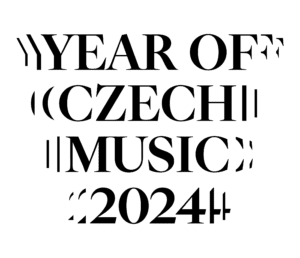JAN DISMAS ZELENKA
Il serpente del bronzo (The Bronze Serpent), oratorio ZWV 61
1. Coro
2. Recitativo (Azaria, Namuel)
3. Aria (Namuel)
4. Recitativo (Egla)
5. Aria (Egla)
6. Recitativo accompagnato (Dio)
7. Aria (Dio)
8. Recitativo (Azaria, Egla, Namuel)
9. Aria (Azaria)
1 0. Recitativo (Egla,Namuel)
11. Aria a due (Egla, Namuel)
12. Recitativo (Mosé)
13. Aria (Mosé)
14. Recitativo accompagnato (Dio)
15. Recitativo (Egla)
16. con recitativo (Egla, Azaria)
17. Aria (Azaria)
18. Recitativo (Mosé)
19. Coro
Gabriela Eibenová soprano (Egla)
Jaro Kirchgessner alto (Namuel)
Elvira Bill alto (Azaria)
Jaroslav Březina tenor (Mosé)
Roman Hoza bass (Dio)
Ensemble Inégal
Adam Viktora conductor, artistic director
On Good Friday, 7 April 1730, there was a performance at the Dresden Court Chapel of an Italian oratorio, or more precisely a sepolcro (a type of oratorio presented during Holy Week at a stylised Holy Sepulchre), Il serpente del bronzo, without doubt a Late Baroque musical masterpiece. The libretto was by the poet laureate of Saxony, Stefano Benedetto Pallavicino (1672–1742); the music was by Jan Dismas Zelenka (1679–1745), who hailed from Louňovice pod Blaníkem (Launiowitz) in Bohemia. The subject matter of the libretto is remarkable in itself. This is a story from the Old Testament Book of Numbers – referring allegorically to the serpent in he Garden of Eden and Christ’s sacrifice on the cross – that has been mostly marginalised throughout the history of music. Pallavicino and Zelenka, however, exploited its dramatic potential in full, creating a work that easily ears comparison with the best in Italian oratorio and opera of its time. Strangely enough, like many other seventeenth and early eighteenth-century works, The Bronze Serpent was soon forgotten. After more than 270 years, Zelenka’s score, deposited at the Sächsische Landesbibliothek in Dresden, was revived by Adam Viktor and Ensemble Inégal and the première recording was issued on the Nibiru label in 2005. Thirteen years later, the effort to gain a comprehensive knowledge of this sacred work came to fruition in Gabriela Viktorová Eibenová’s thesis Jan Dismas Zelenka: Il serpente di bronzo – the outstanding composition of the high baroque. Over the past two decades, Zelenka’s music has enjoyed an unprecedented renaissance. He is rightly seen as a major composer of the Baroque era. The scholarship has also made great strides, thanks to musicologists Janice B. Stockigt and Jóhannes Ágústsson and their colleagues, who until recently presented the results of their researches almost every year at the Zelenka Conference Prague. Listening to the work, no one will be left in doubt that l serpente del bronzo is a truly remarkable work of the “Bohemian” Baroque. It also compels us to consider how many such works are waiting to be rediscovered on the shelves of archives, libraries and churches.’


